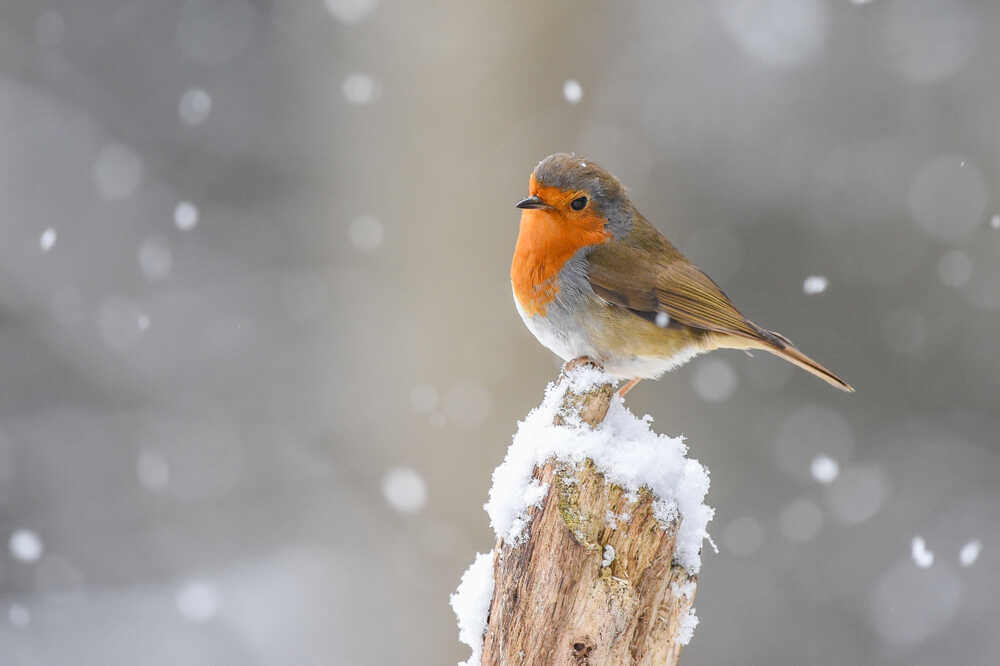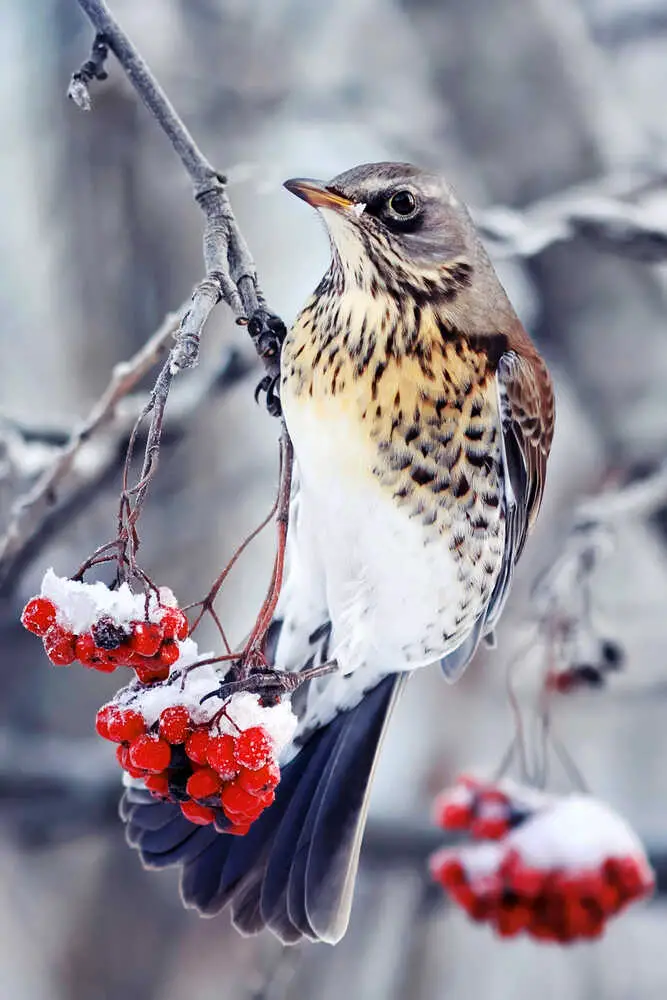Do your garden feeders seem to have less activity when the temperature drops and the nights draw in? Mine vary from day to day – sometimes I can’t keep the dishes topped up quick enough, while others I throw lots of uneaten treats away.
I know that some birds migrate, but wondered are there any other reasons why my garden seems quieter in wintertime.
Where do birds go in winter hopes to get to the bottom of it?
There are around 50 species of birds that leave our shores in the winter. Most of them head southwards in search of healthy food sources. However, many birds migrate to Britain and bolster populations.
Although birds die of starvation in winter it mainly occurs when there has been a consistent frost. Birds are resilient enough to manage for 2 or 3 days, but much longer than this it’s likely that they won’t survive.

Table of Contents
Where do birds migrate to in winter?
Migratory birds do so because they don’t fancy their survival chances in cold British winter. Insectivores, in particular, are more likely to leave our shores. Insects are less in abundance, or similarly, can’t survive the cold.
Ants head deeper underground, below the frost-line, caterpillars hibernate, and some bugs, beetles, and spiders head indoors to keep warm.
Birds need to fly south, to conditions where insects are plentiful.
Birds head on safari.
Many migratory birds head to Africa, which is no mean feat; the journey is around 9600km and takes up to a month.
There, they find an array of different habitats teeming with insects. However, competition for food is stiff; joining the British birds along with the resident African ones are European and Asian migrants.
The birds encounter many different climates and conditions on their journey. Starting as they fly over the British Channel, across the Mediterranean, and the Sahara Desert. Their diet is nothing if not varied, as they eat the local delicacies from grass plains, lush woodland, and savannahs.
Many birds head to Africa in October, most notably swifts, swallows, chiff-chaffs, wheatears, and ospreys. But, the most impressive of all has to be the tiny willow warbler, who travels over 5000- miles bi-annually over sea, mountains and deserts – all to ensure its survival and breeding opportunities.
Some birds migrate as far as Spain, the black cap for instance, where they happily spend their days in the sun feasting from insects in the olive groves.
Birds that migrate to the UK
Many bird species choose Britain as their favoured place to winter. It is known as longitudinal migration and refers to the movement of birds between Eastern and Western regions. That is why we see many continental birds on our shores in the autumn.
In relation to much of Europe, our winters are mild. Some species take advantage of that and choose to battle it out with our resident birds for food.
Jays, blackbirds, redwings, and fieldfare arrive from Poland, Norway, and other parts of Scandinavia. They arrive here between September and November and often stay up until April.

Where do sedentary birds go in winter?
Birds understand the concept of their being heat and safety in numbers. When it begins to get cold, many birds form communities and roost together in large groups. Even the most territorial of birds, such as the robin and wren, roost overnight in groups to share body heat.
These flocks have specific flight paths and typically stop at the same feeding stations each day. If that is your garden, then you’re in for a busy winter.
If their journey misses your garden, then it will probably be a quiet winter, other than some individual hardy birds.
Torpor
Birds can enter a state of torpor to survive cold periods of reduced food availability.
They lower their body temperature, which in turn decreases their metabolic rate. It sends them into a trans-like state and conserves their energy and heat for hours, days, or even weeks at a time.
The birds’ chances of surviving starvation improve, but, unless they are extremely well-hidden they are vulnerable to predators.
Final thoughts
Thanks for taking the time to read ‘where do birds go in winter
Our feathered friends have adapted many ways of staying warm if they remain resident year-round. They include fluffing up and oiling their feathers to protect from wind and rain; seeking shelter in tree cavities or dense undergrowth that traps some of the days’ heat.
The sensible birds pack their bags and head to Spain or Africa to spend their winter feasting off the insects that plague wild animals at watering holes or those rife in the olive groves. Lucky them!
